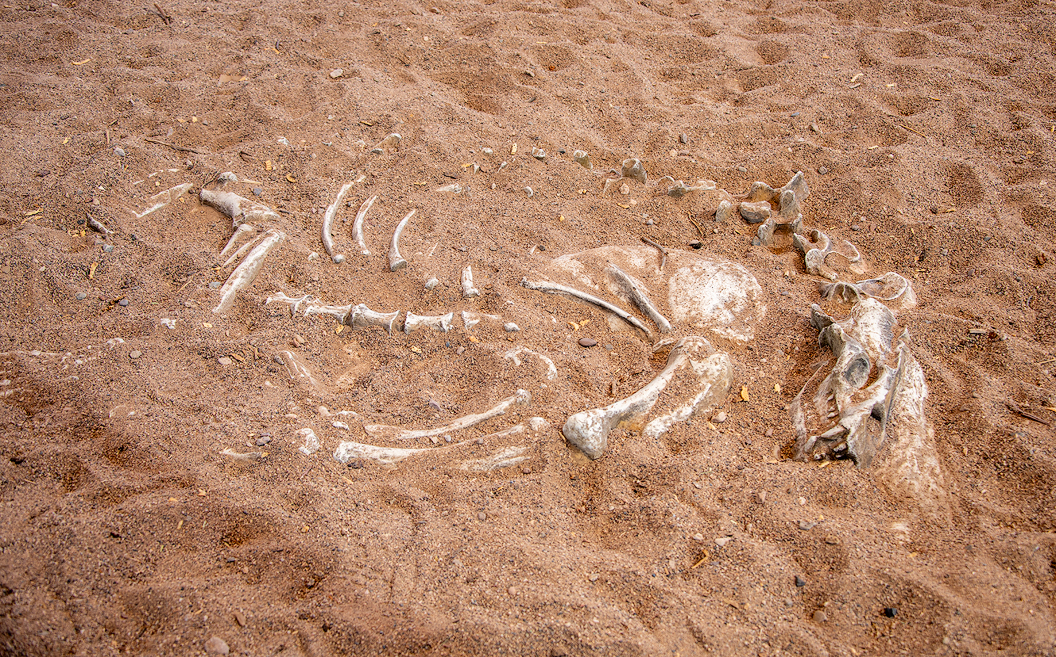I was surprised by a small paddock filled with a mixture of sand, soil, wood chips, and bones. It turns out that is area is used for teaching kids about fossil hunting. I'm not sure what animal donated its bones but it resembles a horse. I think this is a wonderful learning exercise for the young ones — I certainly did not have such instruction in my younger years.

A second paddock showed the footprints of a three-toed animal — a velociraptor, perhaps? I will suggest that this was simulated — the horse (or whatever it was) looked more realistic.

Wow! This is an outstandingly beautiful plant — albeit a stranger to my eyes. However, the Internet helped me identify it (I think) as Baccharis sarothroides A.Gray. According to Wikipedia, it is "Native to the Sonoran Desert of northwestern Mexico (Baja California, Baja California Sur, Sinaloa, Sonora) and the Southwestern United States (southern California, Arizona, New Mexico, western Texas), it is common in gravelly dry soils and disturbed areas." It seems to fit our location.

Some of the shoreline is hard to distinguish between land and lake. I like the look.

Off in the distance, I spotted an egret. Now I really needed one of those super long-range lenses — of course, that would have made this a very expensive local trip. I tried walking around the lake but by the time I got closer, the egret had departed.

Another flock of ducks enjoying this lake.

Up close, I found this Mallard duck standing on one leg getting ready for a nap. He was still watching me to make sure I kept my distance but a nap was but a moment away. It is hard for me to believe that a two-legged creature could nap while only standing on one leg.

Now this Mallard seemed to have a better idea — lay on the ground then catch a snooze.

When I pointed the camera to the center of the lake, I thought it was just another duck. Nope, it was a Cormorant. According to Wikipedia, "Their feet have webbing between all four toes. All species are fish-eaters, catching the prey by diving from the surface. They are excellent divers, and underwater they propel themselves with their feet with help from their wings; some cormorant species have been found to dive as deep as 45 meters (150 ft). "

Another idyllic lake — I love the reflection of the trees and bushes in the slight ripples on the surface of the water. Very picturesque.

Walking between lakes, there were a few benches where one could relax. However, Mother Nature appears to have created a natural bench out of this particular tree. How cool!
